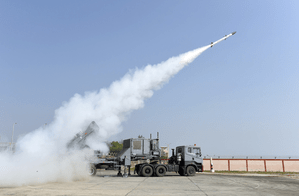
India’s Defence preparedness may receive a major financial push, with government sources indicating a likely Rs 50,000 crore increase in the nation’s military budget following the successful execution of ‘Operation Sindoor’.
A report in NDTV quoting government sources stated, the additional funds are expected to be allocated through a supplementary budget later this year, potentially pushing the total Defence outlay beyond the Rs 7 lakh crore mark for the first time.
The Union Budget for 2025–26, presented by Finance Minister Nirmala Sitharaman on February 1, had already earmarked a record Rs 6.81 lakh crore for Defence. This figure marked a significant 9.2 per cent rise from the previous year’s Rs 6.22 lakh crore.
If the additional allocation is approved, it will further underscore the government’s strategic priority towards military modernisation and national security.
Sources revealed that the extra funds will be channelled into key areas such as research and development, procurement of advanced weaponry, replenishment of ammunition stocks, and acquisition of state-of-the-art military hardware.
The proposal is likely to be tabled for parliamentary approval during the Winter Session.
Since the beginning of Prime Minister Narendra Modi’s tenure in 2014, Defence spending has seen a steep upward trajectory.
In 2014–15, the Defence Ministry was allocated Rs 2.29 lakh crore. The current budget not only dwarfs that figure but also represents the largest allocation among all ministries, constituting 13 per cent of the national budget.
The momentum for the proposed increase comes in the wake of ‘Operation Sindoor’, India’s decisive military response to the April 22 terror attack in Pahalgam.
The operation, which targeted terror infrastructure in Pakistan and Pakistan-occupied-Kashmir, demonstrated India’s growing military capabilities and strategic resolve.
‘Operation Sindoor’ has also drawn attention to the Indian military’s integration of indigenous defence systems with advanced technologies.
Notably, the operation showcased the effectiveness of India’s air defence architecture, including the indigenous Akash missile system, often compared to Israel’s Iron Dome.
In a related development, India also tested a new anti-drone weapon called Bhargavastra. Designed as a low-cost counter-drone system operating in ‘hard kill’ mode, it employs micro-rockets to neutralise aerial threats.
The system underwent successful trials at the Seaward Firing Range in Gopalpur, Odisha, earlier this week, with officials confirming that all test objectives were met.











